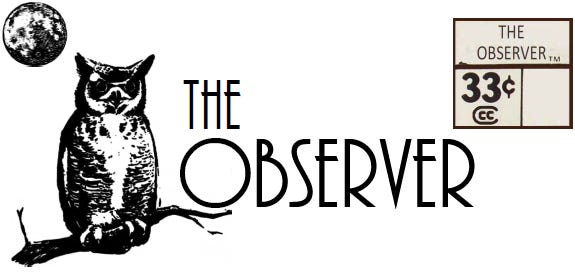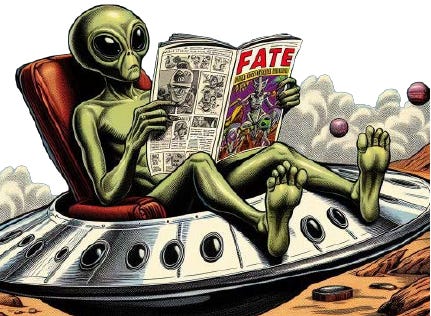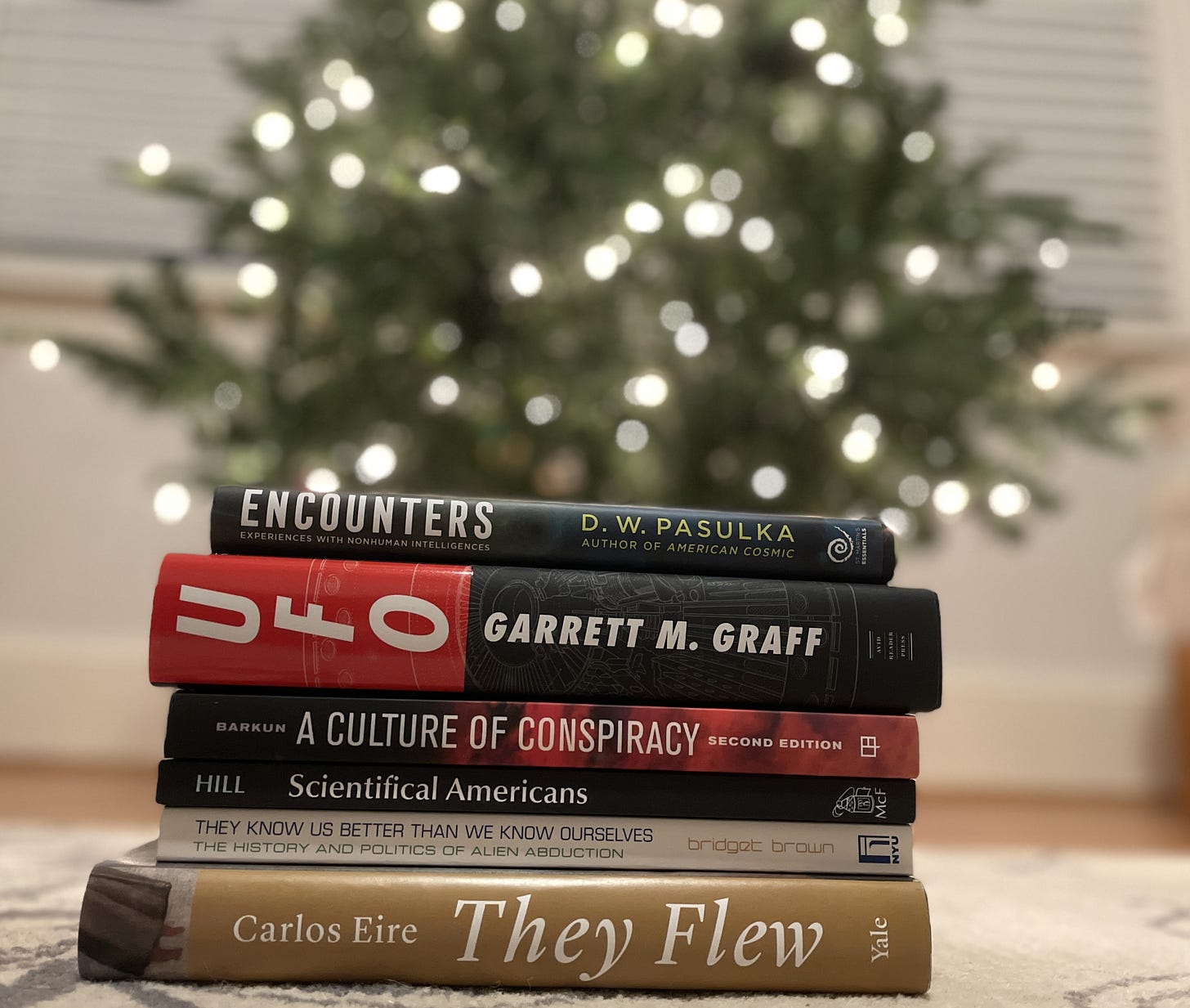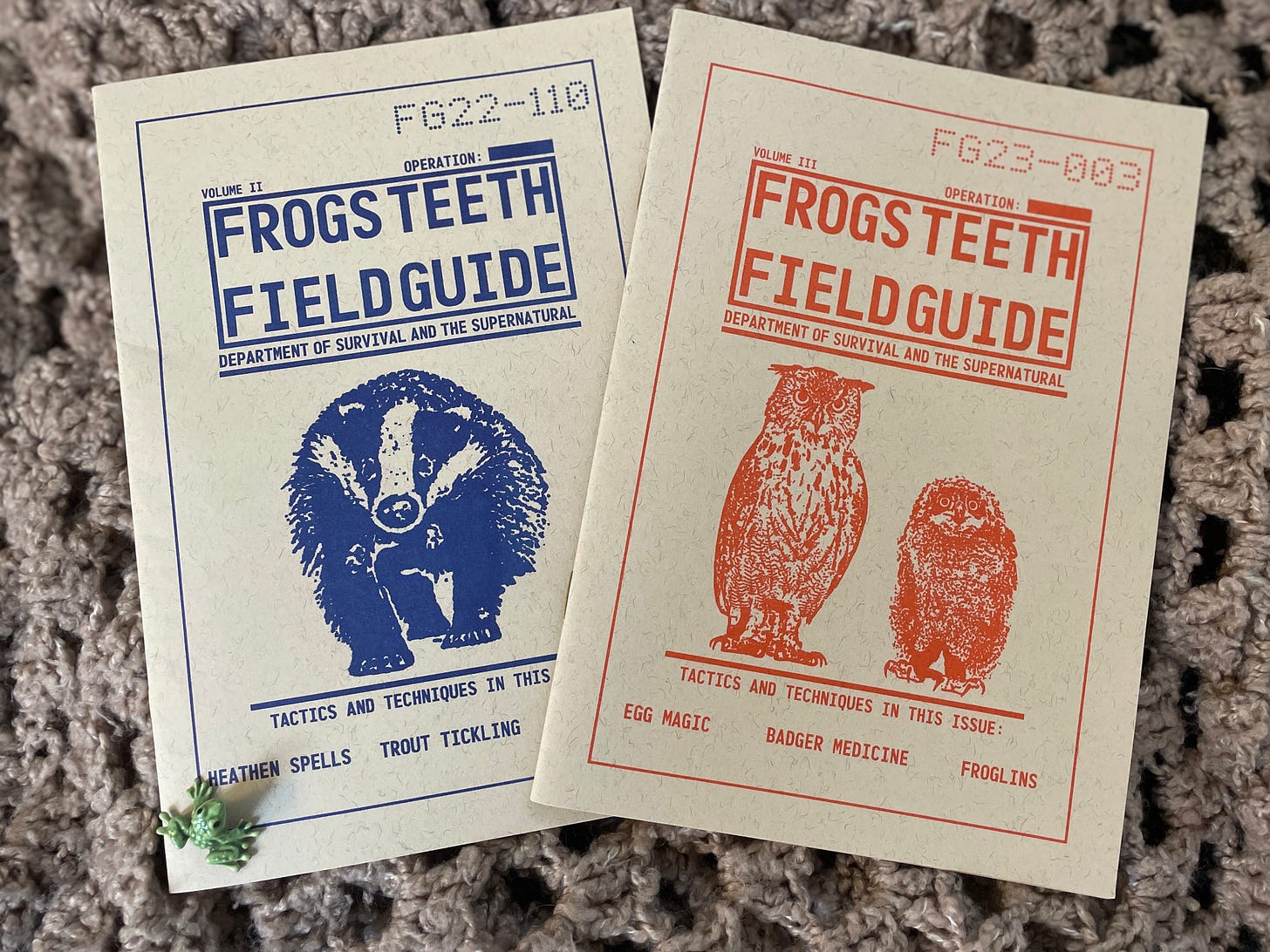FATE Magazine
Last week I had the distinct privilege of chatting with The First Lady of Forteana and Forewoman of FATE Magazine, Phyllis Galde. I am thrilled to report that she is regaining her voice and mobility after suffering from a severe stroke earlier this year. After a 15-minute conversation dominated by my nervously excited rants, it’s clear she’s back on her feet and eager to provide FATE fans with another installment of the highest of strangeness.
When she was able to get a word in edgewise, she told me that the next issue of FATE is headed to the printers any day now. Instead of an issue about “Skinwalkers” (as was hinted in the back of the last issue), Phyllis told me that “since it’s Christmas time, I’m going to have an angel on the cover.” As I started picturing an idyllic Christmas scene replete with beings of light descending from the sky, Phyllis clarified that she’s planning to feature “the weird, odd-looking angels.”
It sounds like she hasn’t missed a step.
Ms. Galde even gave us some homework—asking if we could write a piece about the Anunnaki—“those pesky buggers.” Look for it in an upcoming issue of FATE (unless Phyllis deems it unworthy for publication, which is entirely possible.)
In the meantime, because reporting on the world’s anomalies doesn’t come with the best health benefit package, please consider donating to help with the medical costs Phyllis has incurred as a result of her stroke.
Long live FATE!
Black Friday Book Haul
Due to a couple of “Buy 2 Get 1 Free” book deals last month, we were finally able to justify adding these $29.99 tomes to The Observer’s library.
UFO: The Inside Story of the US Government’s Search for Alien Life Here—and Out There (2023) by Garrett Graff
Whew! That’s a long title. 16 words, not counting the acronyms. Also, the author has too many double consonants in his name—are we supposed to stress those parts when we say GaRRRReTTTT GraFFFFF? Whatever. We immediately had an aversion to this book.
But Mr. Graffffff has a chapter called “Sex with Aliens;” and his engaging analysis of UFOlogy’s minutiae—including inside baseball about figures like John Lear and Bill Cooper—softened our unnecessarily harsh initial judgment.
I mean really—ragging on the guy because of how his name’s spelled? Or about the length of his book’s title? That’s so childish!Encounters: Experiences with Nonhuman Intelligences, Explorations with UFOs, Dreams, Angels, AI, and Other Dimensions (2023) by Diana Pasulka
It seems like people have forgotten that a title doesn’t need to contain references to every topic between its covers. Save that for the synopsis on the back! Diana Pasulka’s latest book has a subtitle that has its own subtitle—a sub-subtitle. It rings in at 14 words (17 if you break apart the acronyms). It’s like the author couldn’t decide on a name and went with a mishmash of terms designed to surface her book in a wide-range of search results.
Putting that aside, Pasulka’s book makes an important distinction between the “mediated idea of extraterrestrial contact” and actual encounters with “nonhuman intelligence.” By unlearning what we’ve been conditioned to believe about “contact,” we can begin to understand the true nature of the phenomenon.
We also appreciate the fact that she deliberately focused on the kinds of encounters that don’t comport with commonly held notions or stereotypes—the highly strange outliers that many nuts-and-bolts UFOers dismiss out of hand.
It’s a small book—satisfyingly so in some ways, frustratingly so in others. Especially when you consider that it’s only 248 pages of healthily-spaced size 12 font. We can already tell that we should have just waited for the less expensive paperback version.
They Know Us Better Than We Know Ourselves: The History and Politics of Alien Abduction (2007) by Bridget Brown
Another 15-word title. We know we’re getting hung up on it at this point—but seriously—what happened to books with titles like Chariots of the Gods (four words), The Day After Roswell (four words), or The 12th Planet (technically only two words with a number)?
In TKUBTWKO (our catchy acronym for Brown’s book) the author notes how various factions of abductees espouse either a pessimistic or optimistic interpretation of their experience—viewpoints that are exemplified in the contrasting opinions held by “alien abduction experts Budd Hopkins and John Mack.” We just love the fact that Dr. Brown considers “alien abduction experts” an acceptable term to use.
Ultimately Brown makes it clear: “I do not believe in aliens.” But she believes that the abduction experience is real enough to the survivors and thus worthy of serious academic study. She proposes that stories of this nature are a way for people to express anxieties about the rate of cultural and technological change in contemporary society.
Oh, and one last thing about that title—it’s a nod to famous abductee Whitley Strieber, who used the phrase to describe the “Grays” in his landmark book, Communion (1987).
Moving on …
A Culture of Conspiracy: Apocalyptic Visions in Contemporary America (2013) by Michael Barkun
Barkun kept his book’s title to single-digits, barely. He could have lost the “A” and just called it Culture of Conspiracy to eliminate an extraneous word right off the bat. Nevertheless, the second edition of Barkun’s work highlighting the intersection between conspiracy theories and UFO subculture is captivating.
He outlines the history of conspiracism as it developed in America, emphasizing “the fusion of right-wing conspiracy theories with UFO motifs.” There’s a whole chapter dedicated to “UFO Conspiracies 1975-1990,” and another that argues why conspiracy authors like David Icke and Jim Keith are the poster children for theories that mix the New World Order with flying saucers.
The book deftly moves between a smorgasbord of fringe topics, and the outcome will likely satisfy a diverse array of conspiratorial palettes.
Scientifical Americans: The Culture of Paranormal Researchers (2017) by Sharon Hill
In her debut book—with its respectable seven-word title—
provides an interesting analysis of how and why amateur paranormal investigators (non-scientists) cloak themselves with the trappings of Science.She defines scientifical as “the attempt to be scientific without achieving it” and her book provides ways to discern when a self-styled expert knows their stuff, or if they simply “sound sciencey.” Hill demonstrates how these tactics add an air of legitimacy to the information being presented
The author is a skeptic and a scientist, but before potential readers start to question her biases, Hill issues this context in the preface: “The patterns I identify should be changed but I’m not discouraging research into fringe fields. I am, instead, encouraging new and better approaches to paranormal field research and investigation.” And who doesn’t love a little constructive criticism every now and then?!
They Flew: A History of the Impossible (2023) by Carlos Eire
Another pithy title comes courtesy of Carlos Eire, Professor of Religious Studies and History at Yale University. He examines reports of anomalous aerial phenomena in the early Modern Era (circa 1400-1800), specifically as they pertain to stories involving miraculously levitating saints. The author also dissects accounts of witches and other cursed souls who obtained their power of flight from demonic sources—events that were widely accepted by the general public.
Eire’s study reveals how spirituality and science combine to inform the limits of possibility and the boundaries of the supernatural, pointing out that when “belief in the possibility of the impossible” becomes too widespread, it paves the way for “attention seekers and tricksters” to take advantage of a susceptible population. It’s an important point to keep in mind, especially as the contemporary hype around supernatural topics continues to churn out an endless supply of paranormal personalities looking to separate you from your hard-earned $29.99.
Frogs Teeth Field Guide
We love a good supernatural-themed zine with a sense of humor. The Department of Survival and the Supernatural (DSS) was nice enough to send us issues #2-3 of their official Field Guide, which ostensibly claims to be for “the prevention of supernatural encounters and dissemination of practical survival techniques.” However, after reading their publication, our reviewer found themselves with an irresistible urge to explore the outdoor oddities in their area.
The zine’s bread-and-butter is mythology and the creatures that inhabit that rich world, but they also find time to include other bits of life-altering information.
Where else can you learn about the horrifying legend of “Necropants,” receive step-by-step instructions on when and how to flip a goat, and find a recipe for a classic pasta dish from the middle ages? More than likely … only in the Frogs Teeth Field Guide. Their original content and pleasing visuals make this series of guidebooks a must-have for all backyard folklorists.














